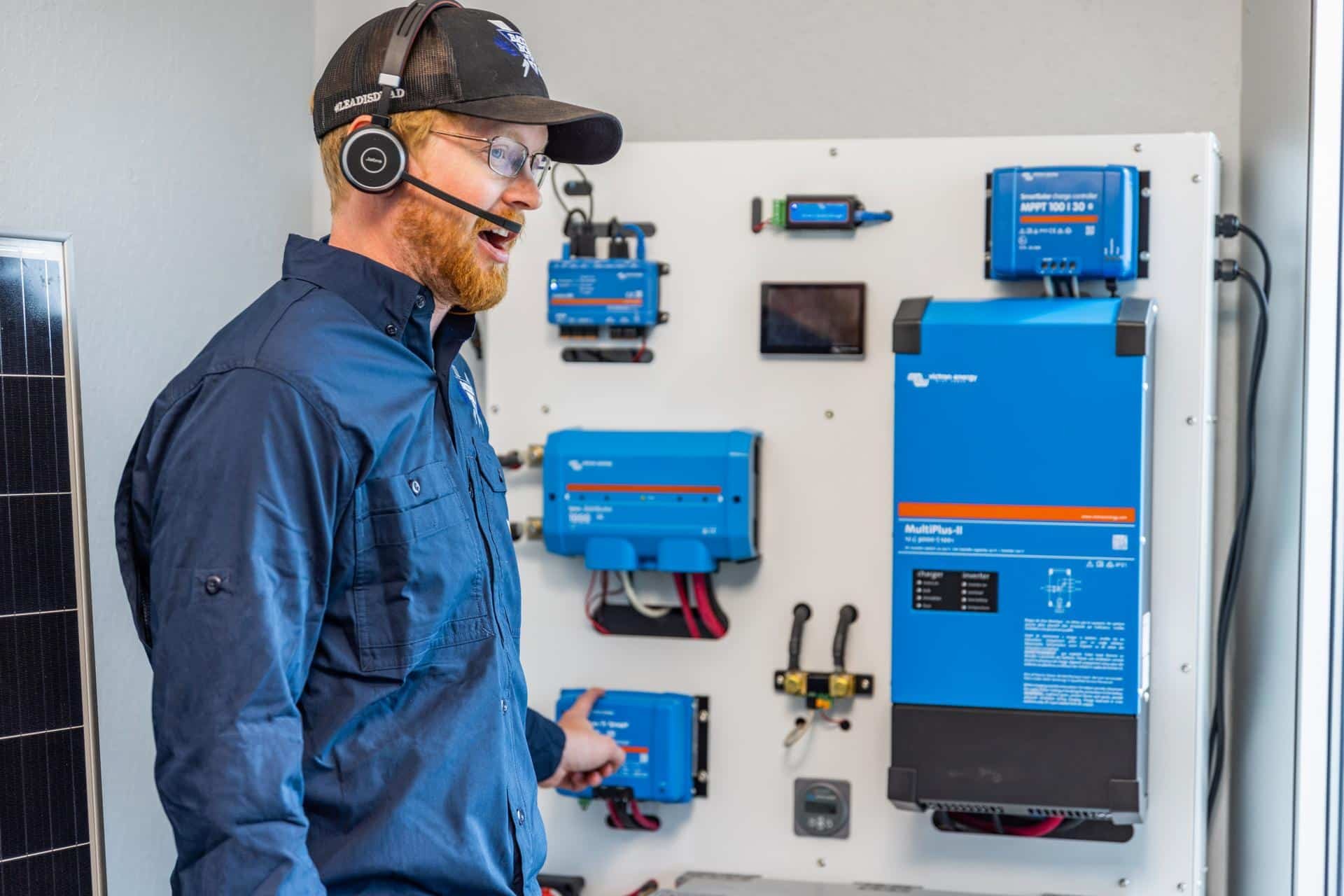Lithium batteries are increasingly popular for their fast charging and long lifespan. However, they can sometimes experience charging issues. This guide provides five easy troubleshooting tips to help you diagnose and fix a lithium battery that’s not charging.
 Man inspecting electrical connections on a lithium battery.
Man inspecting electrical connections on a lithium battery.
Lithium batteries rely on a Battery Management System (BMS) to safely regulate charging and discharging processes. The BMS protects the battery from damage caused by overcharging, over-discharging, extreme temperatures, and other potential hazards. But even with a BMS, problems can still arise. Let’s explore some common reasons why your lithium battery might not be charging and how to troubleshoot them.
Common Reasons for Lithium Battery Charging Problems
Several factors can contribute to a lithium battery not charging. These range from simple connection issues to more complex problems with the battery or charging system. Here are some of the most common culprits:
- Loose Connections: A loose connection anywhere in the charging circuit can interrupt the flow of electricity.
- Faulty Charger: An incompatible or malfunctioning charger may not provide the correct voltage or current for charging.
- Low Voltage Disconnect: The BMS may have triggered a low voltage disconnect to protect the battery from excessive discharge.
- Internal Battery Damage: Physical damage or internal faults within the battery can prevent charging.
- Wiring Issues: Damaged or incorrectly wired connections can disrupt the charging process.
5 Easy Troubleshooting Tips to Fix a Lithium Battery Not Charging
If your lithium battery isn’t charging, here are five troubleshooting steps you can try:
1. Check All Connections
Start by visually inspecting all connections between the battery, charger, and any other components in the charging system. Ensure all wires are securely attached and free from corrosion. A slightly loose connection can significantly impact charging. Wiggle the wires gently to check for looseness. Tighten any loose connections and try charging again.
2. Use a Multimeter to Test Voltage and Current
A multimeter is a valuable tool for diagnosing electrical problems. Use it to measure the voltage at the battery terminals and the current flowing from the charger. This will help you determine if the charger is outputting the correct voltage and if the battery is accepting a charge. A voltage reading higher than the battery’s nominal voltage (usually around 12.8V for a 12V lithium battery) indicates that charging is occurring. If the voltage is too low, the charger might be faulty.
3. Reset the Low Voltage Disconnect
If your lithium battery has a low voltage disconnect feature, it might have been triggered if the battery was discharged too deeply. Consult your battery’s manual for instructions on how to reset the low voltage disconnect. This usually involves applying a small charge to the battery using a dedicated charger or another power source.
4. Verify Charger Compatibility
Ensure you’re using a charger specifically designed for lithium batteries. Using an incorrect charger can damage the battery or prevent it from charging properly. Check the charger’s specifications to ensure it’s compatible with your battery’s voltage and chemistry (e.g., LiFePO4). Lithium batteries often require specialized charging algorithms to optimize performance and longevity.
5. Seek Professional Help
If you’ve tried these troubleshooting steps and your lithium battery still isn’t charging, it’s best to consult a qualified technician or contact the battery manufacturer for assistance. Internal battery damage or complex wiring issues may require professional diagnosis and repair. Attempting to repair a damaged lithium battery yourself can be dangerous.
Conclusion
Troubleshooting a lithium battery that’s not charging often involves simple checks and fixes. By following these five troubleshooting tips, you can often identify and resolve the issue yourself. However, always prioritize safety and seek professional help if you’re unsure about any step or if the problem persists. Regular maintenance and proper charging practices can help prevent future charging problems and extend the lifespan of your lithium battery. Remember to always consult your battery and charger manuals for specific instructions and safety guidelines.
